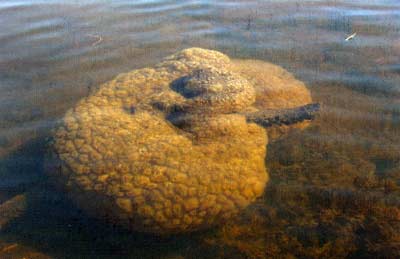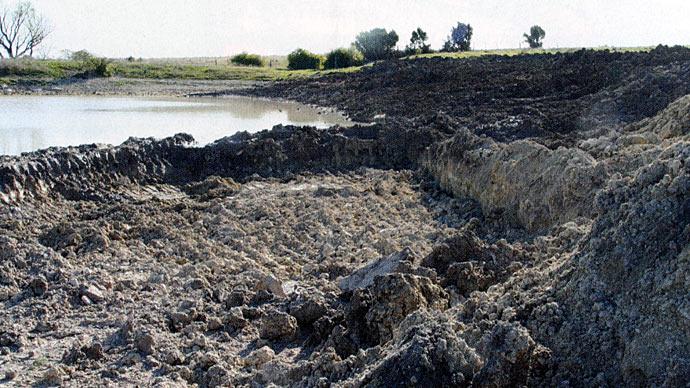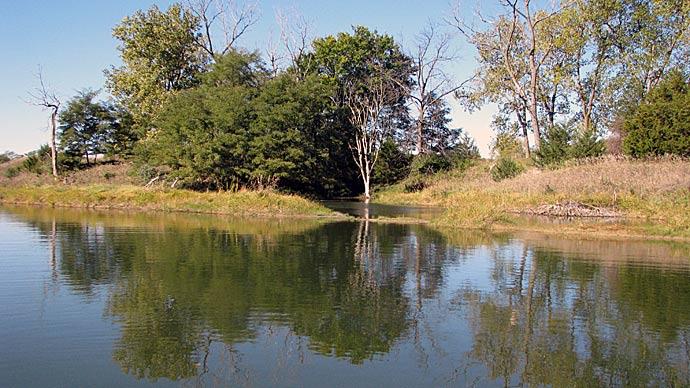
I'll never forget the first time I saw Bryozoans in a lake. I had no idea what they were. Looking at that first one struck me as a hunk of brain attached to a submerged tree branch.
I was a little skeered.
Curiosity overcame my nature to reel back in and not touch the darned thing. But I had to touch it. It looked slimy and soft... like a brain (not that I've ever touched a human brain). But, the indentations, the clear yet opaque look, soon had me leaning over the side of the boat, on my knees, wanting to touch the thing.
What if it stung?
What if it touched back?
What if...
Aw, what the heck. I had to live. I had to know. In my mind, there was some sort of biologist drum roll.
I touched it.
Nothing. Well, then. Looking around, they were everywhere. So I broke off the limb, brought that thing into the boat, and studied it. I had no idea what it was, how it got there, why it was there, and what in the world it was doing.
Enquiring minds had to know, had to learn.
Since Al Gore had not yet invented the Internet, I was soon on a quest. I couldn't just Google it. Those Google kids weren't born, yet. I put the thing in a bucket of water and hijacked it from the north Texas lake that was formerly its home. It wasn't soft. To the contrary, it was firm, almost hard. It looked like semiclear jelly, but had the con¬sistency of an unripe avocado, "gelatinous" may be the best descriptive word. It was a little slimy, but maybe that's because it was wet. As I turned it over and over in my fishguy hands, it did nothing. They didn't move, didn't breathe, didn't talk or interact in any way.
I went on the dark side and broke it open. It was still like hardened jelly.

What in the world was this thing, this deal I yet knew of the name?
After a few phone calls and a trip to the library, I soon learned this was a bryozoan. They have a cute little nickname, "Moss animal".
Those in the know laughed at me, at my ignorance.
There are about 50 fresh water species and I've seen several different ones in lakes around the nation. They're kind of like a cross between plant and animal. They're stationary, typically attach to wood and filter their food. But they'll also attach to other firm objects like water intake pipes. That's the "animal" part. The more I studied the things, the more intriguing they were. They reproduce sexually, but I didn't think to look for that...probably would not have recognized it anyway. They can reproduce asexually as well, through "budding".
Some of them had a brownish tint.
They extract bacteria, microscopic algae, and plankton from the water.
One thing became very clear to me, early on. The only ponds I saw them were healthy ponds. It didn't take long to see they are indicators of ecosystem health.
I soon liked Bryozoans. Where they live, the water is "happy".
It also didn't take long to see they would disappear almost as fast as they showed up. In the fall, they'd go away. It was almost like they melted into the pond and became one with the water, so to speak.
What was also interesting is that they don't necessarily show up again next year. That means they need certain stable conditions in order to thrive. And where they thrive, they do it well.
Some other tidbit facts—bryozoans are 99% water. Each little individual thrives and then many of them become a colony, hence the "brain" look.
I wondered how they got in these ponds in the first place. Further research suggests waterfowl can distribute the individuals, which can quickly reproduce and form the colonies, once they find a place to attach.
Another interesting tidbit—each one is genetically the same in colonies that reproduce asexually.
Most of the time I see them, it's midsummer.
More tidbits—some parts of the colony are feeders. Others reproduce. Some keep house, making sure nothing stays that doesn't need to.
If you have them, odds are high they'll come back.
That's a good thing.
Bryozoans.
Reprinted with permission from Pond Boss Magazine



